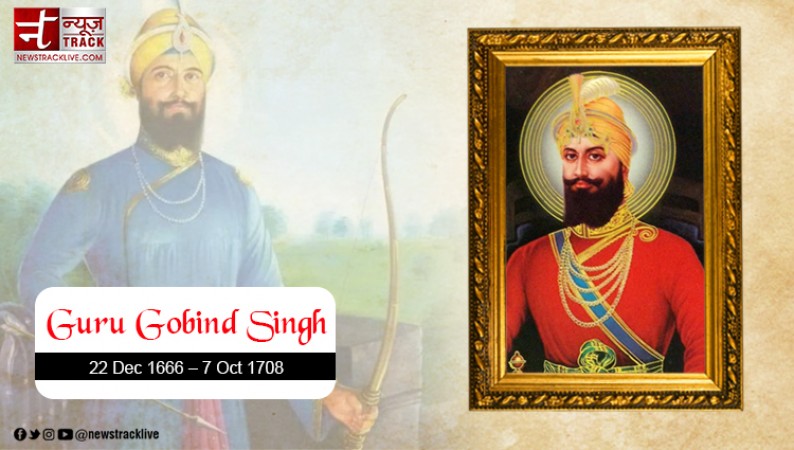
On October 7th, Sikhs around the world observe the death anniversary of Guru Gobind Singh, the tenth Guru of Sikhism, assassinated on 7 October 1708. Guru Gobind Singh's life and legacy are celebrated not only for his spiritual teachings but also for his role as a warrior, poet, and social reformer. Born as Gobind Rai, he ascended to the position of Guru at a young age and played a pivotal role in shaping Sikhism during a turbulent period in Indian history.
Early Life and Ascension to Guruship
Gobind Rai was born on December 22, 1666, in Patna, India, to Guru Tegh Bahadur, the ninth Sikh Guru, and Mata Gujri. His birthplace, Takht Sri Patna Sahib, is now a revered Sikh pilgrimage site. Tragedy struck the young Gobind Rai when he was just nine years old, as his father, Guru Tegh Bahadur, was executed by the Mughal Emperor Aurangzeb for refusing to convert to Islam and defending the religious freedom of Hindus and Sikhs.
Following his father's martyrdom, Gobind Rai assumed the role of the tenth Sikh Guru, becoming Guru Gobind Singh. His leadership marked a significant shift in the Sikh community, as he emphasized the need for the Khalsa, a distinct and disciplined Sikh community, to defend their faith and protect the rights of all people.
The Formation of the Khalsa
Guru Gobind Singh's most enduring legacy lies in his creation of the Khalsa Panth, which he did on April 13, 1699, during the Vaisakhi festival in Anandpur Sahib. On that day, he asked for five volunteers who were willing to sacrifice their lives for their faith. These five individuals, known as the Panj Pyare (Five Beloved Ones), came forward, and Guru Gobind Singh baptized them with Amrit (a sacred nectar), initiating them into the Khalsa brotherhood.
The Khalsa was characterized by a distinct appearance, including the five Ks: Kesh (uncut hair), Kara (a steel bracelet), Kanga (a wooden comb), Kachera (cotton undergarments), and Kirpan (a ceremonial sword). Guru Gobind Singh also emphasized the importance of equality, bravery, and service to humanity within the Khalsa.
Spiritual Teachings and Poetry
Guru Gobind Singh was not only a warrior but also a prolific poet. His writings, primarily in the form of hymns and poetry, are collected in the Dasam Granth, a holy scripture of Sikhism. His poetry extolled the virtues of courage, righteousness, and devotion to God. One of his most famous compositions is the "Jaap Sahib," a hymn of praise to the Almighty.
Legacy and Martyrdom
Guru Gobind Singh's leadership and teachings played a crucial role in galvanizing the Sikh community against oppression and religious persecution. He confronted the Mughal Empire's tyranny and inspired his followers to stand up for justice and freedom.
Tragically, Guru Gobind Singh faced immense personal loss as well. Four of his sons were martyred in the line of duty, fighting against tyranny. On October 7, 1708, Guru Gobind Singh himself was mortally wounded during an assassination attempt by a group of conspirators. He passed away the same day, leaving behind a legacy of bravery and unwavering faith.
The death anniversary of Guru Gobind Singh on October 7th is a time for Sikhs and admirers of his teachings to reflect on his remarkable life and the enduring principles he stood for. Guru Gobind Singh's legacy lives on through the Sikh community and continues to inspire people worldwide to stand up for justice, defend religious freedom, and uphold the values of equality, courage, and devotion. His contributions to Sikhism and Indian history remain etched in the annals of time, ensuring that his memory endures for generations to come.